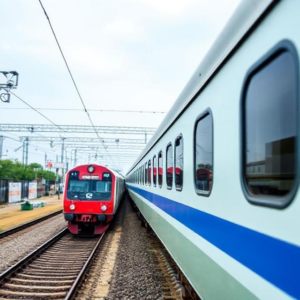Innovation in Train Scheduling and Operations
Innovation in train scheduling and operations is all about using new technologies and smart methods to make sure trains run on time, efficiently, and safely. Indian Railways has a huge network, so managing it requires advanced algorithms, AI (Artificial Intelligence), and real-time tracking systems to ensure smooth operations. Let’s break it down:

1. Advanced Algorithms and AI Used to Manage Train Schedules:
- Train Scheduling: Managing train schedules is complex because there are so many trains and stations. Advanced algorithms help figure out the best possible times for trains to depart, arrive, and pass through stations without delays or overcrowding. These algorithms take into account things like track availability, train speeds, and weather conditions to create schedules that are efficient.
- Artificial Intelligence (AI): AI plays a big role in helping Indian Railways predict and manage train operations. AI can look at past data to figure out patterns in train movement, helping to predict when delays might happen and how to avoid them. For example, AI can adjust schedules in real time if there’s a delay, ensuring that trains keep moving smoothly.
2. Real-Time Tracking and Optimization of Train Movement:
- Real-Time Tracking: With modern technology, Indian Railways can track each train in real-time. This means the exact location of each train is known at any given moment. Real-time tracking helps in quickly detecting delays or problems on the tracks, and this information is shared with passengers and station authorities.
- Optimizing Train Movement: Once trains are tracked, optimization systems can adjust their movements to avoid bottlenecks or delays. For example, if one train is running late, the system can adjust the movement of other trains to avoid congestion on tracks. This ensures trains don’t get stuck waiting for each other and helps keep the entire network flowing smoothly.
- Communication Systems: AI also helps improve communication between train operators, control centers, and stations. If there’s a problem on the tracks, the system can quickly send alerts to operators and adjust the schedules to reduce any disruptions.
3. Challenges and Breakthroughs in Managing the Busiest Rail Network:
- Huge Network Size: One of the biggest challenges in managing Indian Railways is the size of the network. It’s one of the largest rail networks in the world, with over 65,000 kilometers of track and thousands of trains running daily. Coordinating all of these trains to avoid delays while ensuring safety and efficiency is no small task.
- Congestion on Tracks: In busy areas, like major cities or important routes, track congestion is a common issue. There might be many trains trying to use the same tracks at the same time, leading to delays. Advanced scheduling systems are used to avoid overcrowding on tracks, but it’s still a big challenge in some regions.
- Weather and Natural Disasters: Weather conditions, such as heavy rain, fog, or heatwaves, can affect train movement. For example, heavy rain may cause flooding, which could block tracks. The scheduling system needs to take such factors into account and make quick changes to avoid accidents and delays. AI helps to predict these conditions and adjust the schedules accordingly.
- Breakthroughs:
- Dedicated Freight Corridors (DFC): One major breakthrough in improving scheduling and operations is the creation of dedicated freight corridors. These separate tracks just for cargo trains help reduce congestion on passenger routes, allowing passenger trains to run more smoothly.
- Semi-High-Speed Trains: The introduction of semi-high-speed trains and dedicated tracks for them is another innovation. These trains can run at much faster speeds, and their schedules are optimized for high efficiency.
- Automated Systems: Indian Railways has also started to use automated signaling systems and train control systems to improve train movement. These systems automatically adjust train speeds and schedules based on real-time data, helping avoid accidents and delays.
In Summary:
Innovation in train scheduling and operations is making Indian Railways more efficient by using AI, advanced algorithms, and real-time tracking. These technologies help create better schedules, manage congestion, and make sure trains run smoothly, even on the busiest routes. While there are challenges, like managing such a large network and dealing with weather issues, innovations like dedicated freight corridors, automated systems, and high-speed trains are helping to improve the overall efficiency of the rail system.
Keywords: Indian Railway, Railway











